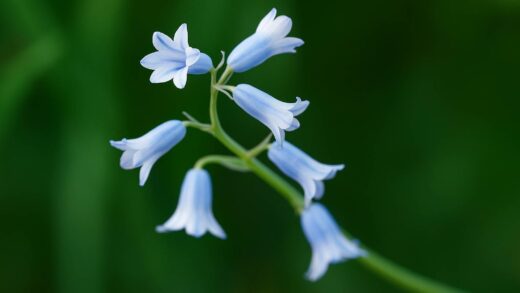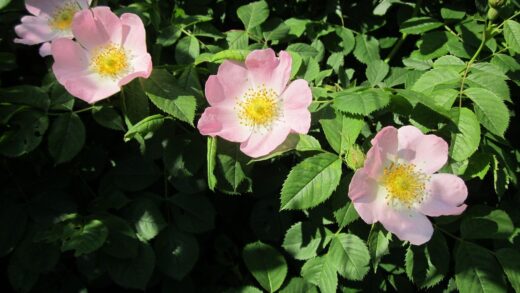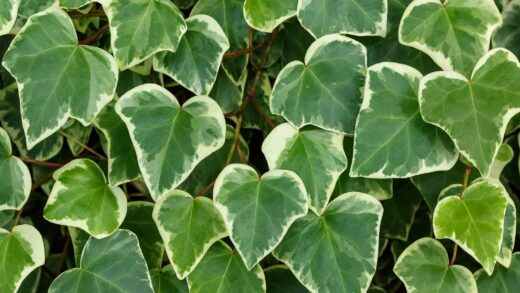While Japanese maples are celebrated for their understated elegance, their health and beauty are directly linked to the nutrients they can access from the soil. These trees are not demanding feeders, and their nutritional needs are best met with a subtle and balanced approach rather than aggressive feeding schedules. Understanding what nutrients they require, when they need them, and how to deliver them effectively is key to promoting strong structure, resilient health, and the most vibrant leaf coloration. Over-fertilization is a common and serious mistake, often causing more harm than a slight nutrient deficiency. Therefore, a thoughtful and conservative fertilization strategy, centered on building healthy soil, is the most successful path to a thriving Japanese maple.
Understanding essential nutrients
Like all plants, Japanese maples rely on a range of macronutrients and micronutrients for their basic metabolic functions. The three primary macronutrients, which are needed in the largest quantities, are Nitrogen (N), Phosphorus (P), and Potassium (K). Nitrogen is crucial for vegetative growth, playing a key role in the formation of chlorophyll and producing lush, green leaves. Phosphorus is essential for energy transfer, root development, and flower and seed production. Potassium contributes to the overall vigor of the plant, regulating water movement and enhancing its resistance to diseases and stress from cold or heat.
While the N-P-K trio is vital, a host of micronutrients, although needed in much smaller quantities, are equally critical for the tree’s health. These include elements like iron, manganese, zinc, and magnesium. Iron, for example, is a key component in chlorophyll synthesis, and a deficiency can lead to iron chlorosis, a common issue in alkaline soils where the nutrient becomes unavailable to the plant. This condition is characterized by yellowing leaves with contrasting green veins. A balanced supply of all these micronutrients is essential for the tree to carry out all its physiological processes correctly.
The ideal way for a Japanese maple to receive these nutrients is through soil that is naturally fertile and rich in organic matter. Healthy soil is a living ecosystem, where microorganisms break down organic materials like compost and fallen leaves, releasing nutrients in a slow, steady, and available form that the tree’s roots can easily absorb. This is why amending the soil with compost before planting and applying an annual layer of organic mulch are such fundamental aspects of care. In many cases, this practice alone can provide all the nutrients a Japanese maple needs, rendering supplemental fertilizers unnecessary.
It’s important to recognize that the goal of fertilizing a Japanese maple is not to force rapid, explosive growth. Such growth is often weak, “leggy,” and more susceptible to damage from wind, pests, and diseases. Instead, the aim is to supplement the soil’s natural fertility just enough to support steady, healthy development and strong cellular structure. A well-nourished tree will have good color, a sturdy framework of branches, and the resilience to withstand environmental stresses. A conservative approach is always the wisest, as it is much easier to correct a minor deficiency than it is to undo the damage caused by fertilizer burn and excessive growth.
More articles on this topic
To fertilize or not to fertilize
Deciding whether or not to fertilize your Japanese maple should be based on observation, not a predetermined schedule. The first step is to assess the tree’s overall health and appearance. A healthy maple will exhibit good leaf color that is typical for its variety, produce a reasonable amount of new growth each year (this varies by cultivar, but could be anywhere from a few to 30 centimeters), and have a generally vigorous appearance. If your tree looks healthy and the soil is in good condition, there is likely no need to add any fertilizer. Unnecessary fertilization can disrupt the natural balance of the soil and potentially harm the tree.
The most reliable way to determine if your soil is lacking essential nutrients is to conduct a professional soil test. You can obtain a soil testing kit from a local agricultural extension office or a reputable online service. A soil test will provide a detailed report on your soil’s pH and the levels of all major nutrients and many micronutrients. This information takes the guesswork out of fertilization, allowing you to address specific deficiencies without adding nutrients that are already present in sufficient quantities. For example, if the test reveals a lack of potassium but adequate nitrogen, you can choose a fertilizer that specifically targets that need.
There are several visual cues that may indicate a nutrient deficiency and suggest that fertilization could be beneficial. The most common sign is chlorosis, or the yellowing of leaves, which can point to a lack of nitrogen or, more commonly, an iron or manganese deficiency, often linked to high soil pH. Other signs include stunted growth, unusually small leaves, sparse foliage, or a general lack of vigor. If you observe these symptoms, and have already ruled out other potential causes like improper watering or disease, then a light application of a suitable fertilizer in the spring may be warranted.
There are also specific situations where fertilizing is generally not recommended. You should never fertilize a newly planted tree during its first year, as this can burn the new, sensitive roots. It is better to allow the tree to focus its energy on establishing its root system in the amended soil. Similarly, you should avoid fertilizing a tree that is showing signs of stress, such as wilting from drought or heat. The salts in fertilizers can worsen water stress in a dehydrated plant. Always ensure the tree is well-hydrated and the underlying cause of stress is addressed before considering fertilization.
More articles on this topic
Choosing the right fertilizer
When you do need to fertilize, selecting the appropriate product is crucial. For Japanese maples, the best choice is a slow-release granular fertilizer. These products are designed to break down gradually over several months, providing a steady, gentle supply of nutrients that the tree can absorb as needed. This mimics the natural process of nutrient release from decomposing organic matter and avoids the sudden, shocking jolt that can come from fast-acting liquid fertilizers. A slow-release formula greatly reduces the risk of over-fertilizing and burning the tree’s roots.
Look for a fertilizer with a balanced N-P-K ratio, or one that is slightly lower in nitrogen. A high-nitrogen fertilizer will promote excessive, weak foliar growth that is not desirable for the long-term structure and health of the tree. Formulations like 10-10-10, 5-8-7, or similar balanced blends are often suitable. Many brands also offer products specifically formulated for trees and shrubs or for acid-loving plants (often labeled for azaleas or rhododendrons), which are also excellent choices as they contain the right balance of nutrients and can help to maintain the slightly acidic soil pH that Japanese maples prefer.
Organic fertilizers are another outstanding option and are often preferred by many gardeners for their soil-building properties. Products like well-rotted compost, fish emulsion, blood meal, bone meal, and cottonseed meal not only provide nutrients but also enrich the soil with organic matter, improving its structure, water retention, and microbial life. These organic sources naturally release nutrients slowly as they are broken down by soil organisms. Using organic amendments is a holistic approach that feeds the soil, which in turn feeds the tree.
It is equally important to know what fertilizers to avoid. Steer clear of general-purpose lawn fertilizers, which are typically very high in nitrogen and are designed to promote rapid, green growth in turfgrass. This high concentration of nitrogen is harmful to Japanese maples. You should also be cautious with “weed and feed” products, as the herbicides they contain can be damaging or even lethal to trees and shrubs if the product drifts onto their root zone. Always read the product label carefully to ensure it is suitable for use on ornamental trees.
Application techniques and timing
The timing of fertilizer application is critical to ensure the nutrients are available when the tree needs them most. The single best time to fertilize a Japanese maple is in the early spring, just as the buds are beginning to swell and before the leaves emerge. Fertilizing at this time provides the tree with the nutrients it needs to support its primary flush of growth for the season. A single application of a slow-release fertilizer in the spring is usually sufficient for the entire year.
Avoid fertilizing your Japanese maple after early July. Applying fertilizer late in the growing season can stimulate a new flush of growth that will not have adequate time to harden off and mature before the first frosts of autumn. This tender, late-season growth is extremely vulnerable to winter damage, which can set the tree back and create entry points for diseases. The tree needs to slow down its growth in late summer and autumn to prepare itself for winter dormancy.
When applying a granular fertilizer, it is essential to distribute it evenly over the entire root zone of the tree. The active feeder roots are not clustered at the base of the trunk but are spread out, typically extending to the tree’s dripline (the outer edge of its canopy) and often slightly beyond. Do not simply dump the fertilizer in a ring around the trunk, as this can burn the bark and will not effectively reach the majority of the roots. Use a handheld spreader or sprinkle the granules by hand over the entire area under the tree’s canopy.
After applying the fertilizer, it is important to water the area thoroughly. This serves two purposes: it helps to activate the slow-release granules and begin the process of breaking them down, and it carries the dissolved nutrients down into the soil where the roots can access them. If you are applying the fertilizer on top of a layer of mulch, the watering will help wash it through the mulch and into the soil below. Always follow the package instructions regarding the application rate; it is always better to err on the side of using too little rather than too much.
Recognizing and correcting issues
Over-fertilization is one of the most serious nutrient-related problems for Japanese maples. The high concentration of salts in excessive fertilizer can draw moisture out of the roots, effectively “burning” them. Symptoms of fertilizer burn include a sudden browning or blackening of leaf margins, leaf drop, and dieback of branches. In severe cases, it can kill the entire tree. If you suspect you have over-fertilized, the best course of action is to try and flush the excess salts out of the soil by applying a large volume of water to the root zone over several hours.
On the other end of the spectrum is nutrient deficiency. The most common deficiency issue, particularly in alkaline soils, is iron chlorosis. This is easily identified by the distinct pattern of yellow leaves with prominent green veins. While the root cause is often a high soil pH that makes iron unavailable, you can provide a temporary fix by applying a product containing chelated iron, either as a soil drench or a foliar spray. For a long-term solution, you will need to gradually lower the soil pH by incorporating amendments like elemental sulfur or using acidifying fertilizers.
A general nitrogen deficiency may present as uniformly pale green or yellowish leaves throughout the tree and stunted growth. If a soil test confirms low nitrogen, a spring application of a balanced, slow-release fertilizer should correct the problem. However, it is important to ensure these symptoms are not being caused by other issues, such as poor drainage or root damage, as adding fertilizer to a tree suffering from root rot will only make the problem worse.
Ultimately, the best approach to nutrient management is proactive and preventative. Start by creating the best possible soil environment before you even plant the tree. Amend the soil with plenty of organic compost to improve its structure and fertility. After planting, maintain a consistent 5-8 centimeter layer of organic mulch over the root zone. By focusing on building and maintaining healthy, living soil, you create a self-sustaining system that provides a slow, steady stream of all the nutrients your Japanese maple needs to flourish for years to come.


















